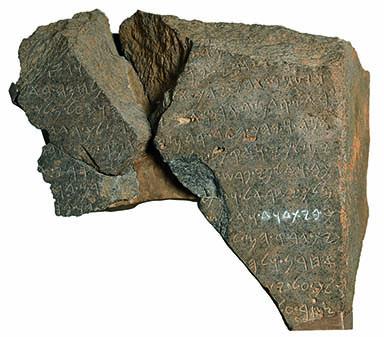Archaeology and ethnicity at Abel Beth Maacah
Ellen White
Source - http://www.biblicalarchaeology.org/daily/ancient-cultures/ancient-israel/were-there-arameans-at-abel-beth-maacah/
Because of its border location and the Biblical references that associate Arameans with Maacah, Robert Mullins and Nava Panitz-Cohen are digging for Arameans at the site of Abel Beth Maacah in northern Israel. But who were the Arameans and why would anyone look for their remains? The simplest answer is that they were a Northwest Semitic people who dwelt in what is now Syria. But that hardly suffices.
The Arameans spoke West Semitic Old Aramaic (not to be confused with Imperial Aramaic, the dialect that became the lingua franca of the ancient world). The earliest certain mention of Arameans is c. 1100 B.C.E. in the inscriptions of Tiglath-pileser I, one of the most influential kings of Assyria during the Middle Period. Originally under the control of the Assyrian Empire, the Arameans were able to gain independence toward the end of the 11th century B.C.E.

An Aramean king commemorates his military prowess on the Tel Dan Stele, which is the first archaeological evidence found for a historical King David. Outlined in chalk is the reference to Israel as “the House of David.” Photo: The Israel Museum, Jerusalem/ Israel Antiquities Authority (photograph by Meidad Suchowolski).
Most of Israel was under the control of the Arameans for eight years during the reign of Chushan-Rishathaim, King of Aram-Naharaim, but Othniel, one of the judges of Israel, managed to defeat them and regain control of the land, according to the book of Judges. Furthermore, the Arameans were combatants to all the kings of the United Monarchy (Saul, David and Solomon).
An important archaeological find is also associated with the Arameans: the Tel Dan Stele. This stele made headlines because it mentions the historical King David; prior to its discovery, there was no archaeological evidence for the historical David. An unknown Aramean king describes his military successes on the stele, where Israel is referred to as the House of David.
Because of the history between the Israelites and the Arameans, Mullins and Panitz-Cohen wonder if there is any evidence of the Arameans at Abel Beth Maacah. However, ethnicity and nationality are very difficult to determine from excavated remains—imagine the challenge of trying to determine if someone was American or Canadian from their possessions alone—so Mullins and Panitz-Cohen’s task is a challenging one.
For more on Arameans at Abel Beth Maacah, read the full Archaeological Views column “Looking for Arameans at Tel Abel Beth Maacah” by Robert Mullins and Nava Panitz-Cohen in the January/February 2015 issue of BAR.